A Vibrant Exploration of Synthetic Chemistry Through Color
Written on
Chapter 1: The Journey in the Lab
During my two years of research in the Christopher Chang laboratory at UC Berkeley, I was granted the opportunity to design and execute my own synthetic methods independently. Throughout this period, I have conducted countless reactions, each with varying degrees of success. While the research process can be demanding, I often remind myself to pause and appreciate the journey. Below are some of my most visually striking reactions and purifications that illustrate the beauty inherent in scientific exploration. The majority of these compounds are fluorophores, known for their vibrant hues.
Section 1.1: Silicon Rhodamine and My Initial Liquid-Liquid Extraction
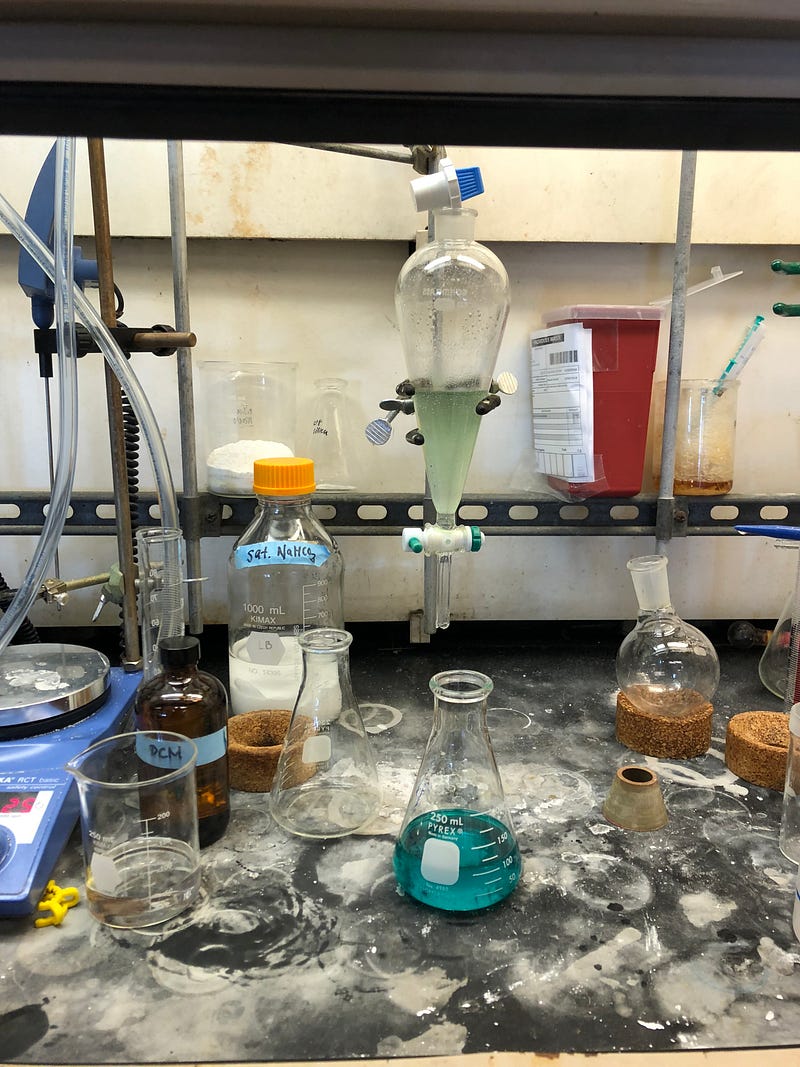
In the 250mL Erlenmeyer flask, a striking turquoise blue solution can be seen, showcasing my pre-purified silicon rhodamine dye. This specific dye possesses fluorescence excitation and emission properties in the far-red region of the electromagnetic spectrum, allowing for lower frequency, longer wavelength light to be used in cell imaging, which minimizes the risk of phototoxicity. Quite fascinating!
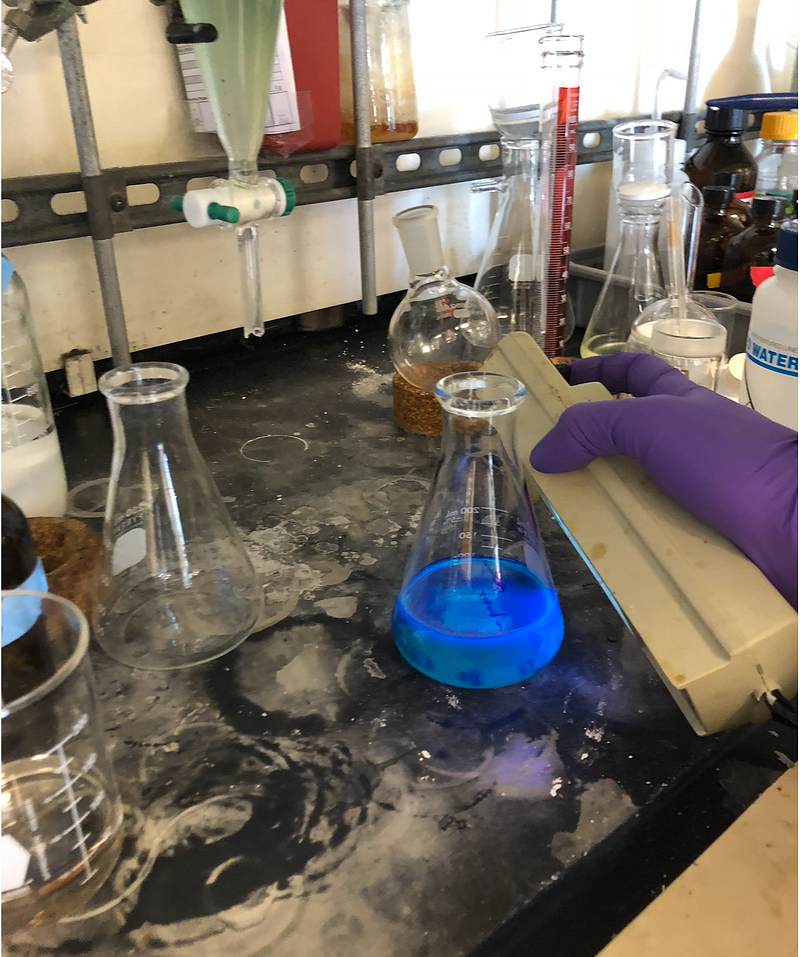
In this image, the same flask is illuminated by a UV lamp, revealing the fluorescence of the silicon rhodamine dye I synthesized. To verify the correct product, I still needed to perform NMR (nuclear magnetic resonance) spectroscopy.
Section 1.2: Janelia Fluor Functionalization
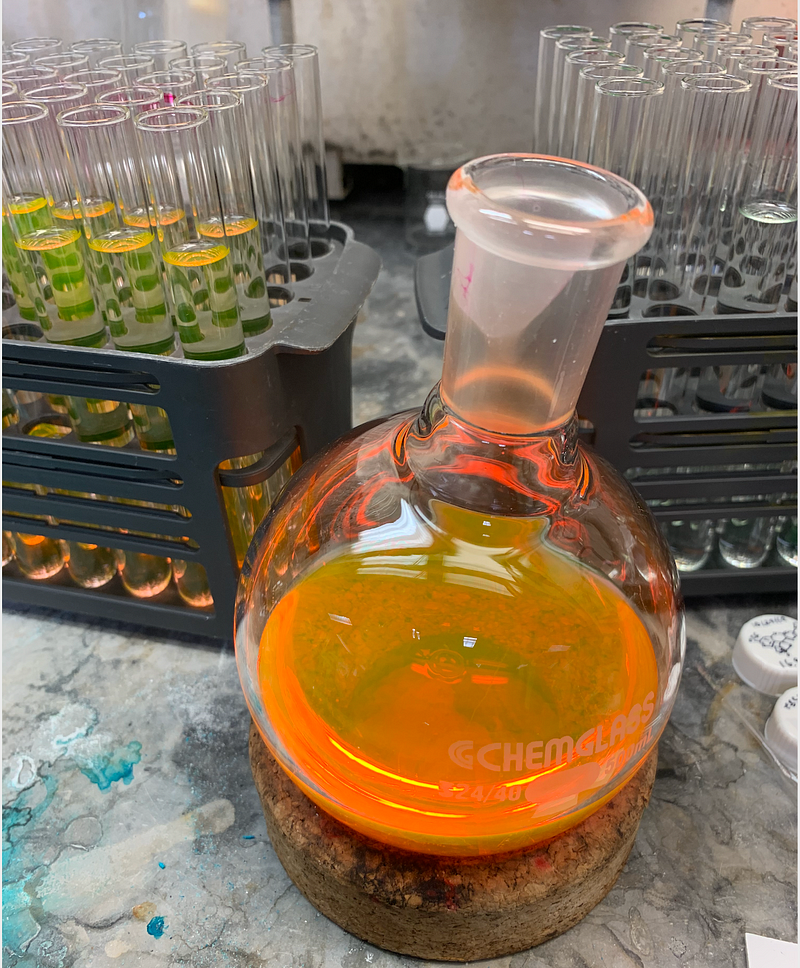
Here lies another spectacular fluorescent label: Janelia Fluor dyes, recognized for their brightness and photostability, are exceptional for imaging single molecules in live cells. This particular purification followed a Buchwald-Hartwig amination, during which I introduced an azetidine group into the Janelia Fluor framework. The test tubes in the background contain residual palladium catalyst, which explains the green hue of the solution. After evaporating the solvent from the round bottom flask, I was delighted to find that my compound had transformed into a striking purple oil!
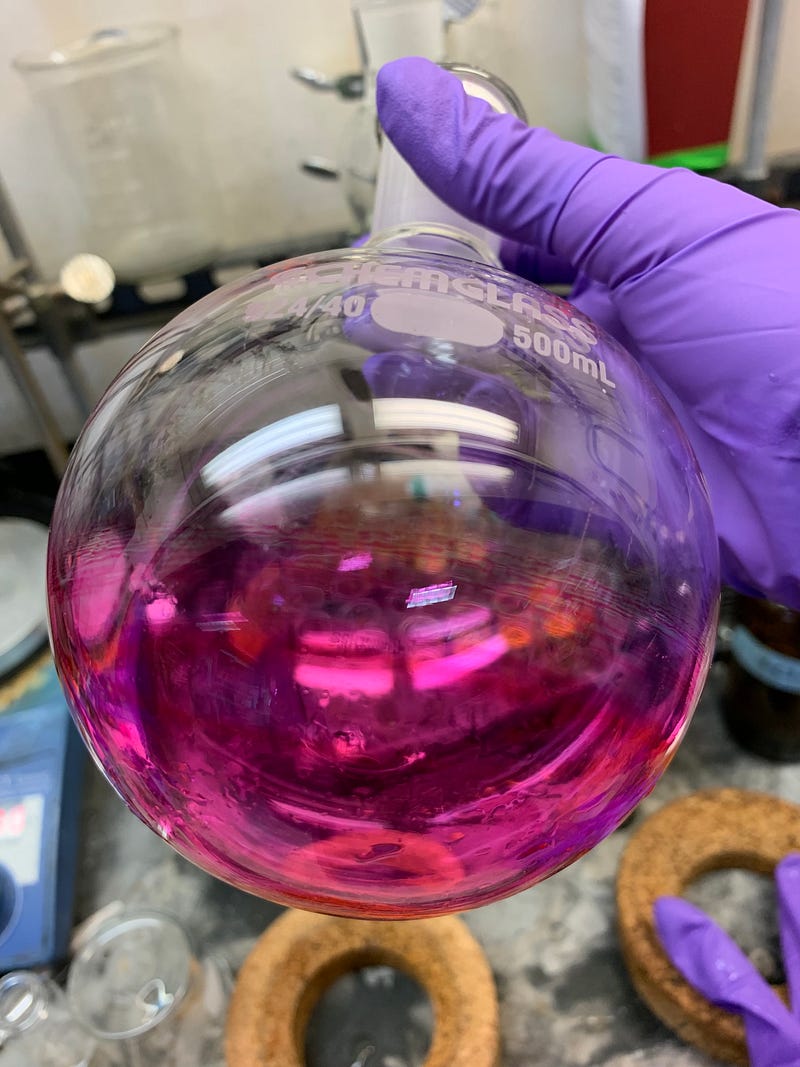
Once I evaporated the solvent completely, I observed that each of my various substituted Janelia Fluors exhibited different colors. It’s always exhilarating to witness such vibrant transformations. However, not every compound I produce is as exciting; many are simply white or what I affectionately refer to as “organic chemistry brown.”
Chapter 2: The Mystery of Product Hunting
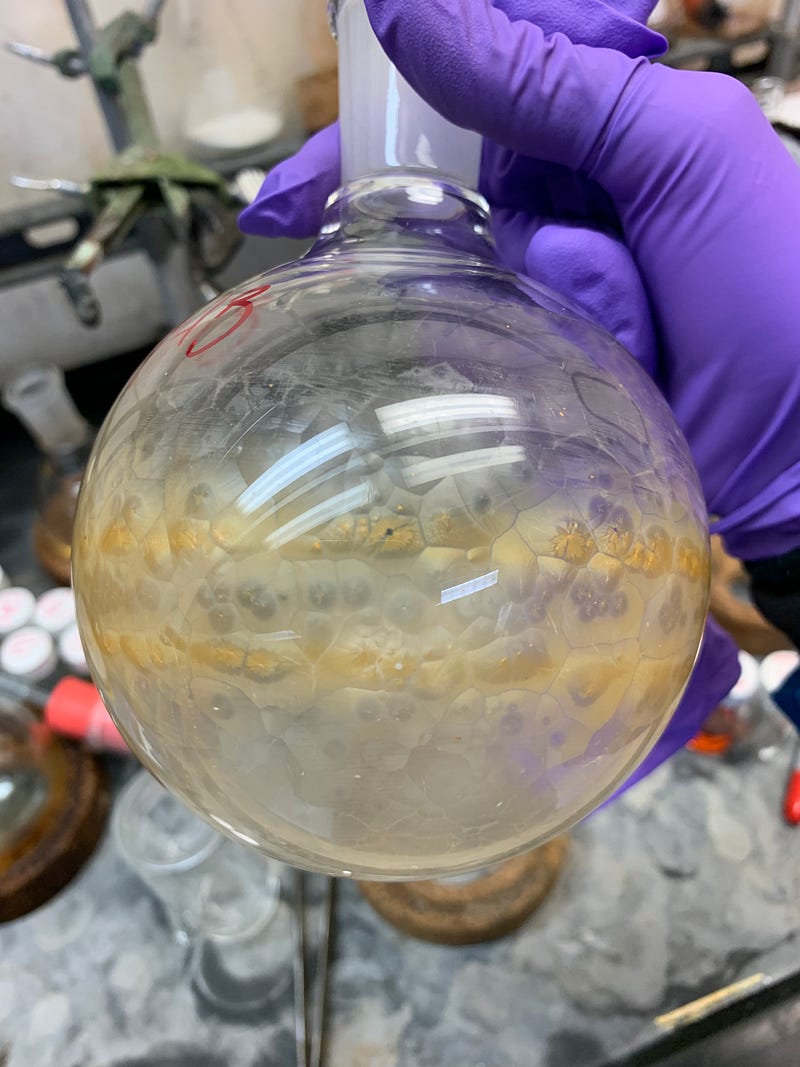
I encountered this unknown compound, likely one of my purification fractions isolated post-flash chromatography. I often refer to this process as “product hunting,” as it involves deciphering the contents of numerous test tubes after running a crude solution through a silica column. Many of these tubes contain unidentified compounds that I analyze using techniques such as TLC, mass spectrometry, and NMR. This particular compound was not what I had aimed to synthesize over the past six months. When I evaporated the solvent from this fraction, I was amazed by the unique crystal formations inside the round bottom flask. This is a prime example of what I term “organic chemistry brown.”
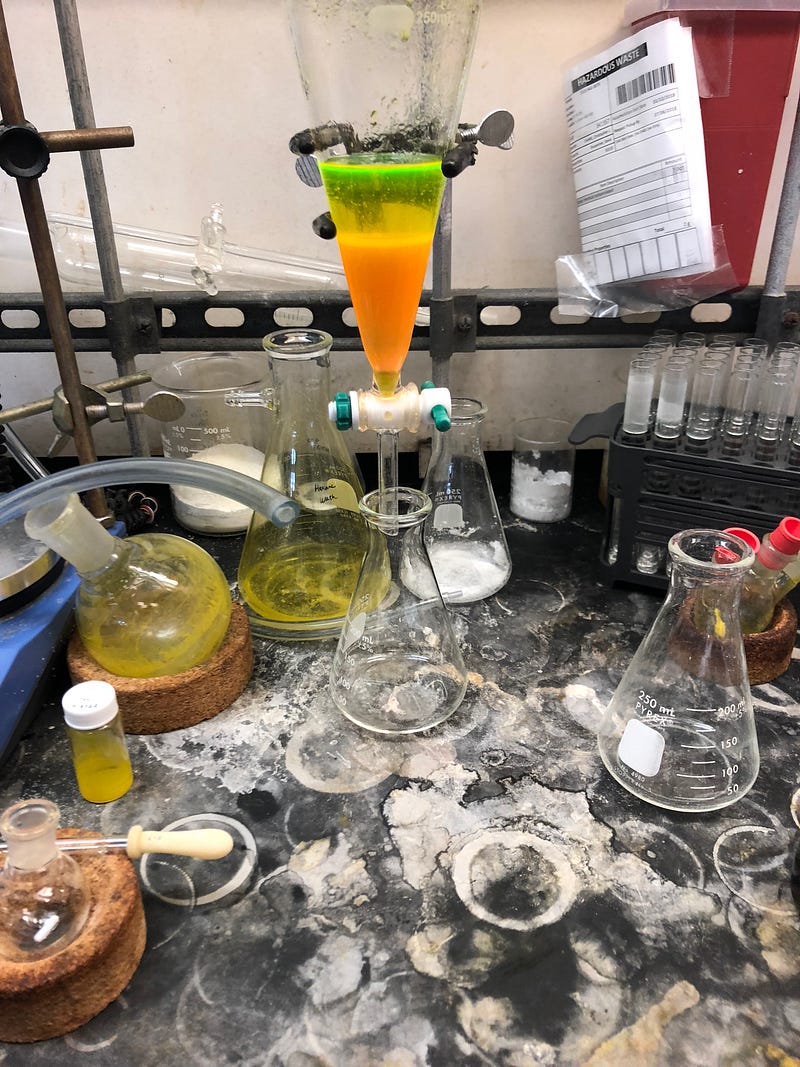
Section 2.1: Fluorescein - The Eye-Drop Dye
You may recognize fluorescein as the yellowish dye used during eye dilation at the optometrist's office. While I didn't synthesize fluorescein for clinical use, it was intriguing to realize I had created a compound with practical applications that I had personally encountered. This reaction reminded me of chemistry's vast implications beyond academia and the laboratory. Interestingly, fluorescein is also the dye used to turn the Chicago River green on St. Patrick's Day!
Section 2.2: Tokyo Green Dye - A Fluorescein Analogue
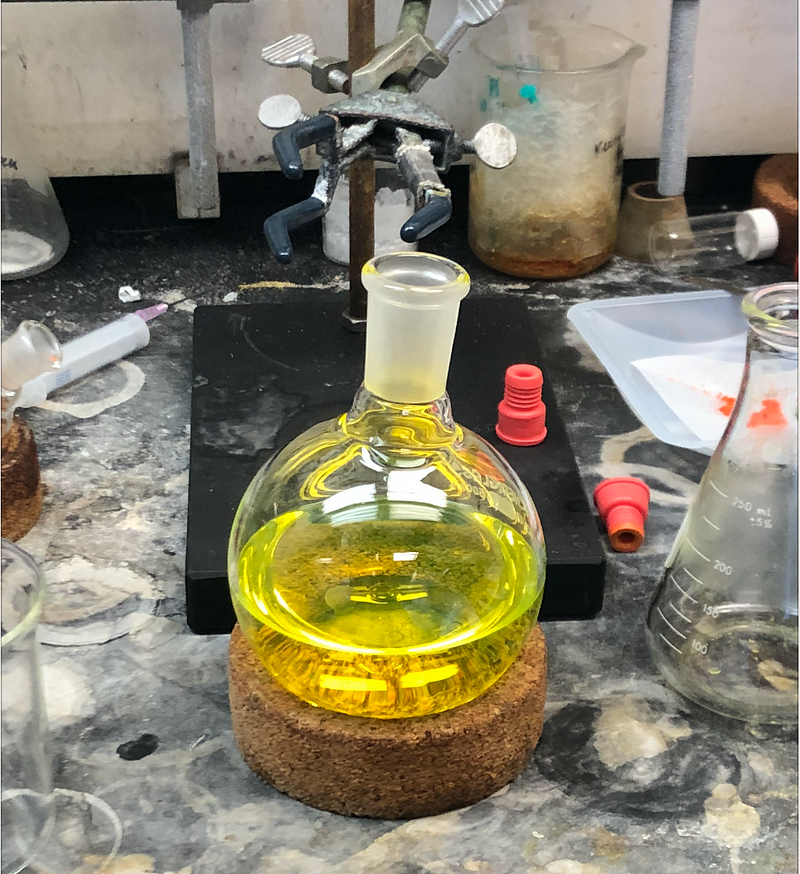
This yellow solution contains Tokyo Green, a dye structurally similar to fluorescein. The only difference is that Tokyo Green has a methyl group in place of the carboxyl group on the benzene ring, positioned ortho to the xanthene moiety. This simple substitution does not affect the quantum yield of the fluorophore. What’s noteworthy is that it illustrates that the carboxyl group is not essential for the dye's function. The structural components, including the carboxyl and methyl groups, serve to maintain the orthogonal arrangement of the xanthene and benzene moieties. Thus, any substituent chosen for the carboxyl group can be tuned to modify the dye's fluorescence characteristics.
A memorable moment associated with this reaction involved the use of Trifluoroacetic Acid (TFA). I struggled to eliminate the residual acid, and my mentor, who was closely guiding me at the time, suggested co-evaporating with toluene three times. I inadvertently added an excessive amount of toluene during the first round, which complicated the evaporation process. My mentor, witnessing the situation, remained patient and supportive despite his initial surprise at the amount I had used. After our work was complete, he quickly departed, and I later received a lighthearted text from another graduate student teasingly noting my mentor's tardiness due to my toluene mishap.
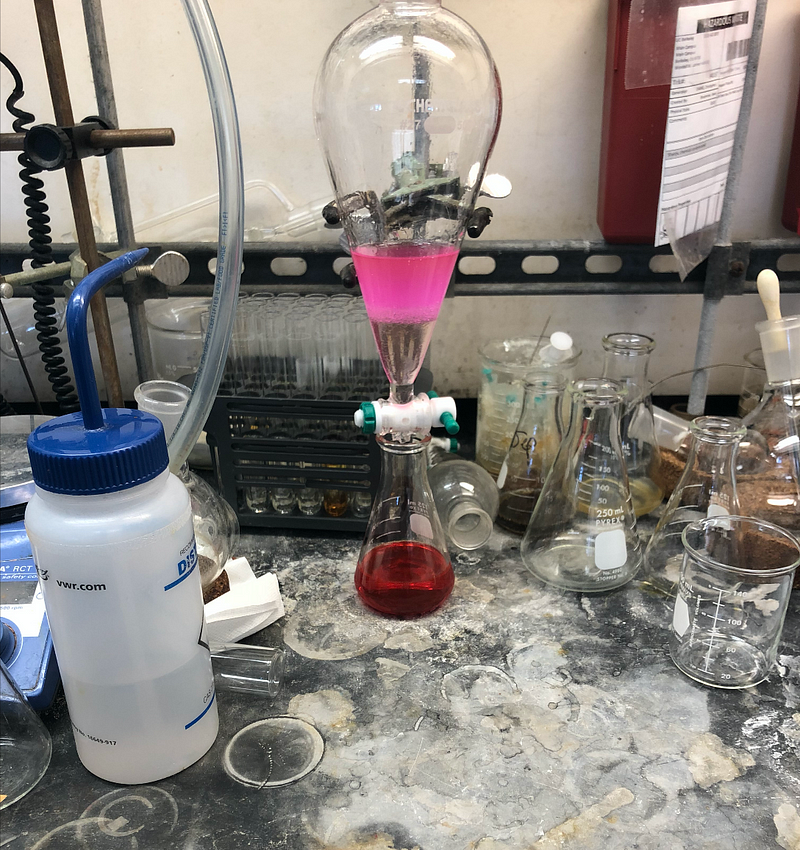
Section 2.3: Resorufin - A Colorful Fluorophore
Our final stop on this colorful journey through chemistry features resorufin, a pink fluorophore in solution that appears red as a solid. In this image, I was functionalizing the resorufin dye to attach it to a previously synthesized chemical probe.
There are countless more fluorophores beyond the ones I have showcased here; these are merely a few examples of what I have synthesized or modified. I hope you enjoyed this vibrant exploration of some of the chemical reactions I have undertaken!
The first video demonstrates how to create a rainbow from solutions through a captivating experiment. The "Chemical Rainbow" experiment reveals the beauty and creativity involved in chemistry.
The second video provides an overview of the Experiment 5 procedure, detailing steps and insights that enhance understanding of the chemical processes involved.